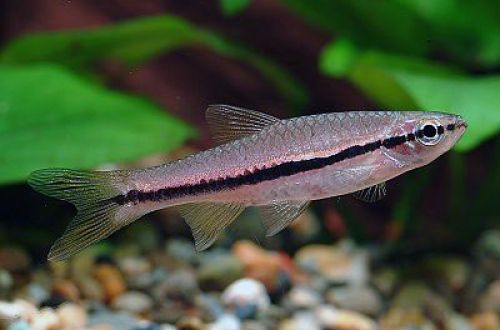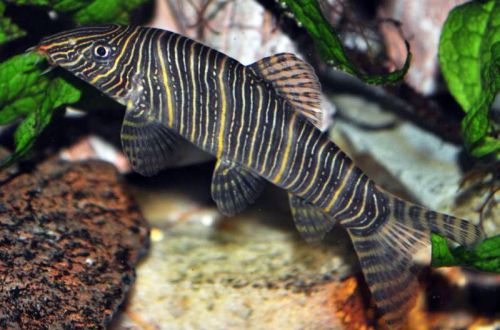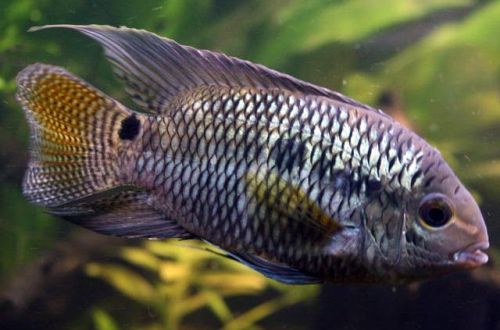
Brilliant Rasbora
Shiny Rasbora, scientific name Rasbora einthovenii, belongs to the Cyprinidae family. An active schooling fish, successful keeping is possible only if certain conditions are recreated, otherwise it is very unpretentious and easy to breed.

Contents
Habitat
The homeland of this species is the southern part of the Malay Peninsula – the territory of modern Thailand, the peninsula, as well as the Greater Sunda Islands, Borneo and Sumatra. It lives in ancient rainforest peat swamps, the water in which is colored brown due to the high concentration of tannins and other chemicals released during the decomposition of organic matter. The bottom is covered with a layer of fallen leaves, branches and other fragments of trees. In most of Southeast Asia, these biotopes are under threat of extinction due to human activities.
Brief information:
- The volume of the aquarium – from 150 liters.
- Temperature – 22-26°C
- Value pH — 5.0–7.5
- Water hardness – soft (2-10dGH)
- Substrate type – sandy
- Lighting – subdued
- Brackish water – no
- Water movement – standing
- The size of the fish is up to 9 cm.
- Meals – any
- Temperament – peaceful, active
- Keeping in a flock of 6 individuals
Description
Adults grow up to 9 cm in length, and this primarily applies to females, males are somewhat smaller. The color of the body is pinkish, and in some cases even purple, fins with a slight hint of red. The characteristic features of the body pattern include a dark stripe along the midline, stretching from head to tail.
Food
Brilliant Rasboras accept all types of dry, live and frozen foods. The main condition is that the diet should be varied, only in this case the fish will show their best colors and delight you with their activity.
Maintenance and care, arrangement of the aquarium
The best conditions are achieved in a biotope aquarium that mimics the natural habitat of fish. An example of the arrangement of such an artificial ecosystem is described in detail in the article “How to create a biotope of the river systems of Southeast Asia.”
For a flock of 8-10 individuals, a tank with a volume of 150 liters or more will be required. The design uses a soft sandy substrate, several fragments of wood (driftwood, roots, branches) and dry leaves, which, in the process of decomposition, will saturate the water with tannins and color it in a rich tea shade. Leaves should be renewed once every few weeks. You can add a few plants native to Asia, such as Malay or Javanese ferns, Javanese moss, etc.
Water parameters are set at low values of hardness and high acidity, an additional means of maintaining the desired hydrochemical parameters is the use of peat in the filtration system, or in a simple rag bag located somewhere at the bottom.
The minimum set of equipment includes a filter, preferably with peat-based filter media, a heater, an aerator and a low power lighting system, as the fish prefer subdued light.
Maintenance of the aquarium is reduced to a weekly replacement of part of the water (15-20% of the volume) with fresh and regular cleaning of the soil from organic waste and glass from plaque.
Behavior and Compatibility
Peaceful and friendly schooling species, prefers to stay in a flock of at least 6 individuals, in this case the fish show their best colors and active behavior. Compatible with many fish of similar size and temperament that can live in similar conditions.
Breeding / breeding
Brilliant Rasbora is a spawning species that scatters eggs in open water. Parental instincts are weak, so the likelihood of eating offspring by adult fish is high. In order to preserve juveniles, it is recommended to use a separate small (40–50 l.) tank – a spawning aquarium, which is only half filled with water. In the design, dense thickets of low-growing small-leaved plants or ferns / mosses are used. Of the equipment, a simple sponge airlift filter and a heater are sufficient. Spawning takes place in dim light, so there is no need for lamps.
When the female becomes noticeably rounder, and the males begin to actively show attention to their chosen ones, then the mating season has come and it’s time to transplant the fish into a separate aquarium. The stimulus for spawning is the addition of small portions of cool water and the inclusion of live foods (bloodworm, daphnia, brine shrimp) in the diet. After a few days, the eggs will be laid aside and the newly born parents will be returned back. The fry appear after 1-2 days depending on the water temperature, and after another day they begin to swim freely. From now on, they should be fed with special microfeed.





